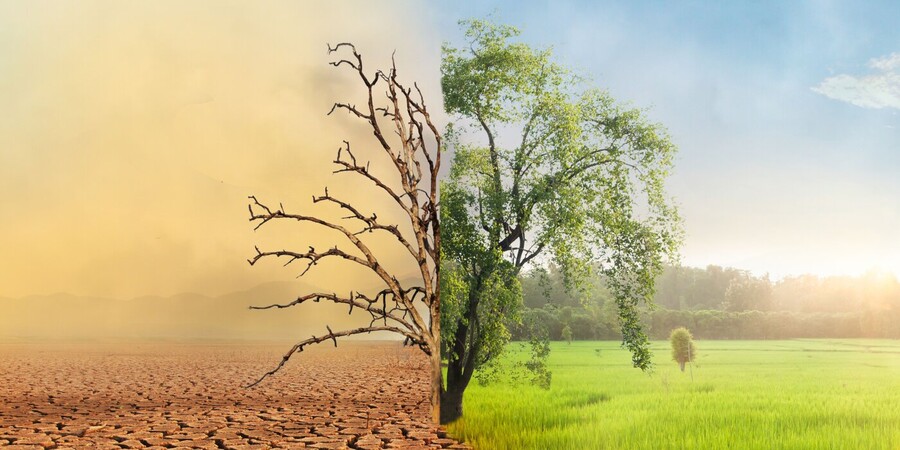In recent years, public discussions about climate change have evolved significantly, especially with the frequency and severity of extreme weather events and their impacts. Some scientists use terms such as “Doomsday Glacier” and “Point of No Return” to emphasize the urgent need for climate action.
As we continue to face climate-related challenges, our mental health and well-being can be profoundly affected, and a psychological response called climate anxiety is becoming increasingly common.
What is ‘Climate Anxiety’?
Climate anxiety, also known as eco-anxiety and eco-worry, is not a medical diagnosis, but instead used to describe the symptoms triggered by current and anticipated climate-related events and can be exacerbated by pre-existing anxiety. According to a survey from the American Psychological Association (APA), more than two-thirds of adults (68%) report experiencing some form of climate anxiety. In the same survey, nearly half of young adults aged 18-34 (47%) said that the stress they feel about climate change affects their daily lives.
Anxiety can manifest in various ways and presents itself differently from person to person. Common emotions and mental symptoms include grief, feeling overwhelmed, anger, shame, loss, guilt, hopelessness and fatigue, worry, and rumination about the future.
Other terms associated with climate anxiety include ecological grief, the sense of loss (including stability of future) related to climate change, and solastalgia, the nostalgia we feel for a traditional way of life or childhood landscape destroyed by environmental changes.
Drivers of climate anxiety & mental health
Climate anxiety has two primary drivers. The first is direct experience of physical destruction of or harm to the environment. The other is exposure to climate change news. Events such as natural disasters, land-use change, and resource depletion, among others, can intensify a sense of climate change-related loss, and heighten anxiety. Experiencing sudden changes first-hand can also increase the risk of developing post-traumatic stress disorder.
One study has shown that rising temperatures and humidity correlate with more frequent emergency department visits for psychiatric concerns, particularly in the summertime.
Additionally, the way climate change news is communicated and the volume of information consumed daily is a significant driver of climate anxiety. Although staying updated and informed on climate change is necessary to move toward solutions, certain media practices can worsen anxiety. For instance, constant exposure to visual media, real-time coverage of environmental disasters unfolding, and 'doom scrolling' (behavior in reading or scrolling negative news for an excessive time) can exacerbate anxiety and may aggravate people’s stress levels.
Anxiety high among children & youth
At this moment in time, children and young adults are witnessing and experiencing the consequences of climate change on a larger scale than previous generations, resulting in a significant impact on youth mental health. This exposure contributes to the development of chronic stress and climate anxiety, increasing the risk of depression, anxiety, and substance use disorders.
According to a 2021 UNICEF report, one billion children live in one of the 33 countries classified as “extremely high risk” for the adverse effects of climate change.
Researchers also conducted a study in 2021 surveying 10,000 young individuals (ages 16-25) in 10 countries about their responses to climate change. Across all the selected countries (Australia, Brazil, Finland, France, India, Nigeria, Philippines, Portugal, the UK, and the USA), 59% of participants reported feeling very or extremely worried about climate change, 84% feeling at least moderately worried, and 75% feeling frightened for the future.
Studies have also found that exposure to chemicals in our environment, including lead, PFAS, and BPA, can increase the risk of children’s mental health symptoms such as anxiety and depression. For more information, see this webinar.
How to manage climate anxiety
Climate change can be an overwhelming and challenging topic. Mental health professionals have identified these key strategies to manage climate anxiety:
-
- Stay informed, but set limits
- Acknowledge and validate feelings
- Take action on what you can control
- Connect with like-minded individuals
- Practice mindfulness and compassion
- Build emotional resilience
- Reconnect with nature
If you or someone you know is experiencing the symptoms of climate anxiety, seeking support from a therapist can be beneficial. For those specifically looking for a therapist who is knowledgeable in the climate crisis, refer to this directory for climate-aware therapists in your area.
In these unprecedented times, it is important to give yourself permission to take breaks on climate news and prioritize your physical, mental, and emotional well-being. By doing so, you’ll be better equipped to rejuvenate and harness the tools needed to contribute to a healthier, safer, and more sustainable future ahead.
Explore the following resources for additional information.
-
- American Psychological Association (2017). Mental Health and Our Changing Climate: Impacts, Implications, and Guidance.
- Collaborative for Health and Environment (2024). Chemical Exposures and Children’s Mental Health.
- Collaborative for Health and Environment (2023). Agents of Change in Environmental Justice: Climate, Health, & Justice.
- See Change Institute (2022). Climate Change & Youth Mental Health: Psychological Impacts, Resilience Resources and Future Directions.
- University of Colorado Boulder (2024). 6 Tips for Coping with Climate Anxiety.
- Yale Sustainability (2023). Yale Experts Explain Climate Anxiety.


